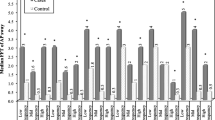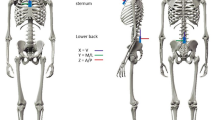Abstract
The aim of this study was to determine the function of visual afference in postural control in Parkinson patients. We enrolled 29 patients and 30 healthy controls. The stabilometry test was performed for posture and balance and Romberg ratio coefficients were calculated. In addition, the Berg Balance Scale and the 6-Minute Walking Test were administered to assess balance and functional exercise capacity; the Unified Parkinson’s Disease Rating Scale was used to determine the stage of the disease; and the Short Form (SF)-36 Health Survey was given to collect information on quality of life. Results: significantly longer Center of Pressure (CoP) sway lengths were observed in the parkinson group. The Romberg index for CoP length of sway in parkinson patients was 94.3 ± 19.3%, versus 147.4 ± 120.6% for the control group. (p = 0.025). Conclusion: Parkinson patients use the increase in CoP sway length and ellipse area to stabilize their balance and sight does not facilitate static postural control as in healthy subjects.

Similar content being viewed by others
References
Rajput AH, Rajput ML, Ferguson LW, Rajput A (2017) Baseline motor findings and Parkinson disease prognostic subtypes. Neurology 89(2):138–143. https://doi.org/10.1212/WNL.0000000000004078
Chou KL, Elm JJ, Wielinski CL et al (2017) Factors associated with falling in early, treated Parkinson’s disease: the NET-PD LS1 cohort. J Neurol Sci 377:137–143. https://doi.org/10.1016/j.jns.2017.04.011
Bonnet CT, Delval A, Defebvre L (2015) Parkinson’s disease-related impairments in body movement, coordination and postural control mechanisms when performing 80° lateral gaze shifts. IEEE Trans Neural Syst Rehabil Eng 23(5):849–856. https://doi.org/10.1109/TNSRE.2014.2369455
Błaszczyk JW, Orawiec R (2011) Assessment of postural control in patients with Parkinson’s disease: sway ratio analysis. Hum Mov Sci 30(2):396–404. https://doi.org/10.1016/j.humov.2010.07.017
Lahr J, Pereira MP, Pelicioni PH et al (2015) Parkinson’s disease patients with dominant hemibody affected by the disease rely more on vision to maintain upright postural control. Percept Mot Skills 121(3):923–934. https://doi.org/10.2466/15.PMS.121c26x0
Bronstein AM, Hood JD, Gresty MA, Panagi C (1990) Visual control of balance in cerebellar and parkinsonian syndromes. Brain 113(Pt 3):767–779
Brown LA, Cooper SA, Doan JB, Dickin DC et al (2006) Parkinsonian deficits in sensory integration for postural control: temporal response to changes in visual input. Parkinsonism Relat Disord 12(6):376–381. https://doi.org/10.1016/j.parkreldis.2006.03.004
Nallegowda M, Singh U, Handa G et al (2004) Role of sensory input and muscle strength in maintenance of balance, gait, and posture in Parkinson’s disease: a pilot study. Am J Phys Med Rehabil 83(12):898–908
Suarez H, Geisinger D, Ferreira ED et al (2011) Balance in Parkinson’s disease patients changing the visual input. Braz J Otorhinolaryngol 77(5):651–655
Huh YE, Hwang S, Kim K, Chung WH, Youn J, Cho JW (2016) Postural sensory correlates of freezing of gait in Parkinson’s disease. Parkinsonism Relat Disord 25:72–77. https://doi.org/10.1016/j.parkreldis.2016.02.004
Pilgram LM, Earhart GM, Pickett KA (2016) Impact of limiting visual input on gait: individuals with Parkinson disease, age-matched controls, and healthy young participants. Somatosens Mot Res 33(1):29–34. https://doi.org/10.3109/08990220.2016.1152237
Hoehn MM, Yahr MD (1967) Parkinsonism: Onset, Progression, and Mortality. Neurology 17:427–442
Folstein MF, Folstein SE, McHugh PR (1975) “Mini Mental State” a practical method for grading the cognitive state of patients for the clinicians. J Psychiatr Res 12:189–198
Ferrazzoli D, Ortelli P, Maestri R et al (2016) Does cognitive impairment affect rehabilitation outcome in Parkinson’s disease? Front Aging Neurosci 8:192. https://doi.org/10.3389/fnagi.2016.00192
Huskisson EC (1974) Measurement of pain. Lancet 2:1127–1131
Berg K, Wood-Dauphinee SL, Williams JL (1992) Measuring balance in the elderly: validation of an instrument. Can J Public Health 83(supp 2):S7–S11
Keus SH, Nieuwboer A, Bloem BR et al (2009) Clinimetric analyses of the modified Parkinson activity scale. Parkinsonism Relat Disord 15(4):263–269. https://doi.org/10.1016/j.parkreldis.2008.06.003
Butland RJ, Pang J, Gross ER et al (1982) Two-, six-, and 12-minute walking tests in respiratory disease. Br Med J 284(6329):1607–1608
Apolone G, Mosconi P (1998) The Italian SF-36 Health Survey: translation, validation and norming. J Clin Epidemiol 51:1025–1036
Vandenbroucke JP, von Elm E, Altman DG, Gøtzsche PC, Mulrow CD, Pocock SJ, Poole C, Schlesselman JJ, Egger M (2007) STROBE initiative Strengthening the Reporting of Observational Studies in Epidemiology (STROBE): explanation and elaboration. Ann Intern Med 147(8):W163–94
Tjernström F, Björklund M, Malmström EM (2015) Romberg ratio in quiet stance posturography—test to retest reliability. Gait Posture 42(1):27–31. https://doi.org/10.1016/j.gaitpost.2014.12.007
Manabe Y, Honda E, Shiro Y, Sakai K, Kohira I, Kashihara K et al (2001) Fractal dimension analysis of static stabilometry in Parkinson’s disease and spinocerebellar ataxia. Neurol Res 23(4):397–404. https://doi.org/10.1179/016164101101198613
Adamovich SV, Berkinblit MB, Hening W, Sage J, Poizner H (2001) The interaction of visual and proprioceptive inputs in pointing to actual and remembered targets in Parkinson’s disease. Neuroscience 104:1027–1041
Van den Heuvel MR, Daffertshofer A, Beek PJ, Kwakkel G, van Wegen EE (2016) The effects of visual feedback during a rhythmic weight-shifting task in patients with Parkinson’s disease. Gait Posture 48:140–145. https://doi.org/10.1016/j.gaitpost.2016.03.020
Jacobs JV, Horak FB (2006) Abnormal proprioceptive-motor integration contributes to hypometric postural responses of subjects with Parkinson’s disease. Neuroscience 141(2):999–1009. https://doi.org/10.1016/j.neuroscience.2006.04.014
Frenklach A, Louie S, Koop MM, Bronte-Stewart H (2009) Excessive postural sway and the risk of falls at different stages of Parkinson’s disease. Mov Disord 24(3):377–385. https://doi.org/10.1002/mds.22358
Louie S, Koop MM, Frenklach A, Bronte-Stewart H (2009) Quantitative lateralized measures of bradykinesia at different stages of Parkinson’s disease: the role of the less affected side. Mov Disord 24(13):1991–1997. https://doi.org/10.1002/mds.22741
Iosa M, Fusco A, Morone G, Paolucci S (2012) Effects of visual deprivation on gait dynamic stability. ScientificWorldJournal 2012:1–7. https://doi.org/10.1100/2012/974560
Panyakaew P, Anan C, Bhidayasiri R (2015) Visual deprivation elicits subclinical postural inflexibilities in early Parkinson’s disease. J Neurol Sci 349(1-2):214–219. https://doi.org/10.1016/j.jns.2015.01.022
Schlick C, Ernst A, Bötzel K, Plate A, Pelykh O, Ilmberger J (2016) Visual cues combined with treadmill training to improve gait performance in Parkinson’s disease: a pilot randomized controlled trial. Clin Rehabil 30(5):463–471. https://doi.org/10.1177/0269215515588836
Barbosa AF, Souza Cde O, Chen J, Francato DV, Caromano FA, Chien HF et al (2015) The competition with a concurrent cognitive task affects posturographic measures in patients with Parkinson disease. Arq Neuropsiquiatr 73(11):906–912. https://doi.org/10.1590/0004-282X20150153
Rocha PA, Porfírio GM, Ferraz HB, Trevisani VF (2014) Effects of external cues on gait parameters of Parkinson’s disease patients: a systematic review. Clin Neurol Neurosurg 124:127–134. https://doi.org/10.1016/j.clineuro.2014.06.026
Heremans E, Nieuwboer A, Feys P, Vercruysse S, Vandenberghe W, Sharma N, Helsen WF (2012) External cueing improves motor imagery quality in patients with Parkinson disease. Neurorehabil Neural Repair 26(1):27–35. https://doi.org/10.1177/1545968311411055
Acknowledgments
We would like to thank the Physiotherapy School of S. Filippo Neri Hospital “Sapienza” University of Rome. The authors would like to thank all patients who participated in this study.
Author information
Authors and Affiliations
Corresponding author
Ethics declarations
Conflict of interest
The authors declare that they have no conflict of interest.
Rights and permissions
About this article
Cite this article
Paolucci, T., Iosa, M., Morone, G. et al. Romberg ratio coefficient in quiet stance and postural control in Parkinson’s disease. Neurol Sci 39, 1355–1360 (2018). https://doi.org/10.1007/s10072-018-3423-1
Received:
Accepted:
Published:
Issue Date:
DOI: https://doi.org/10.1007/s10072-018-3423-1




